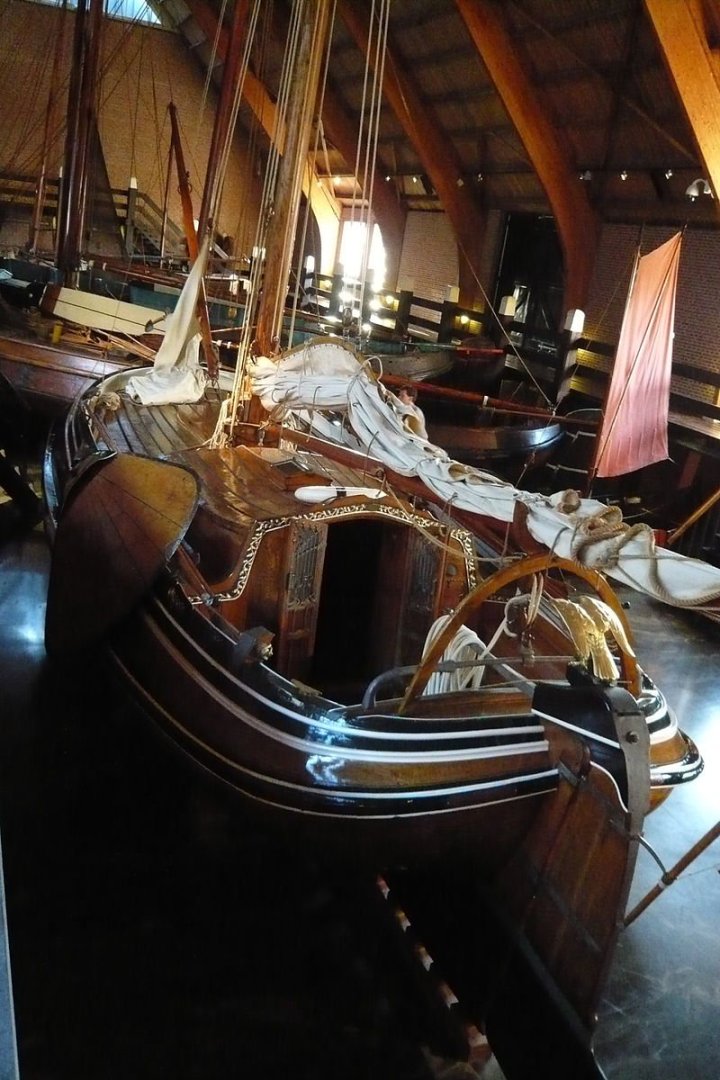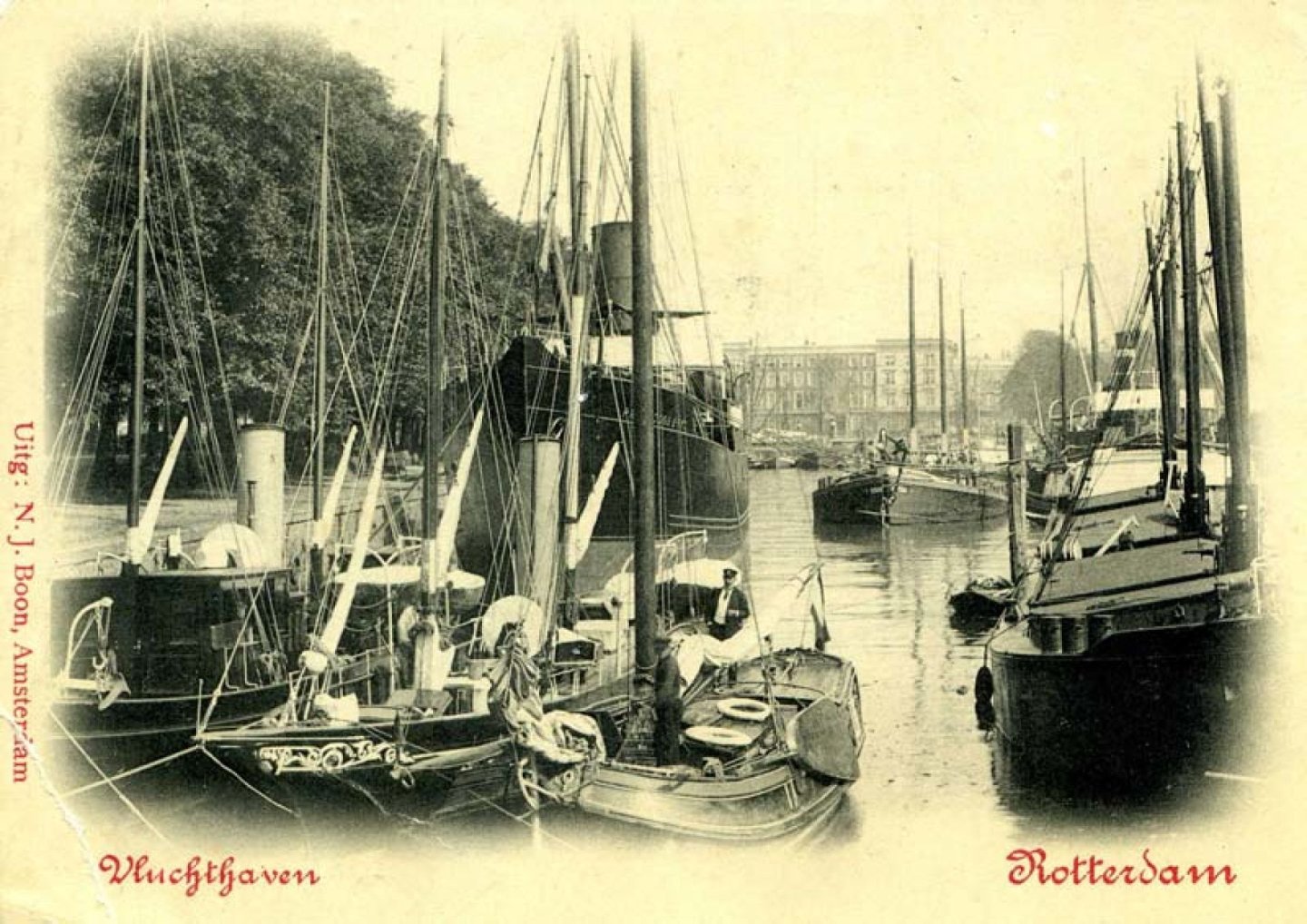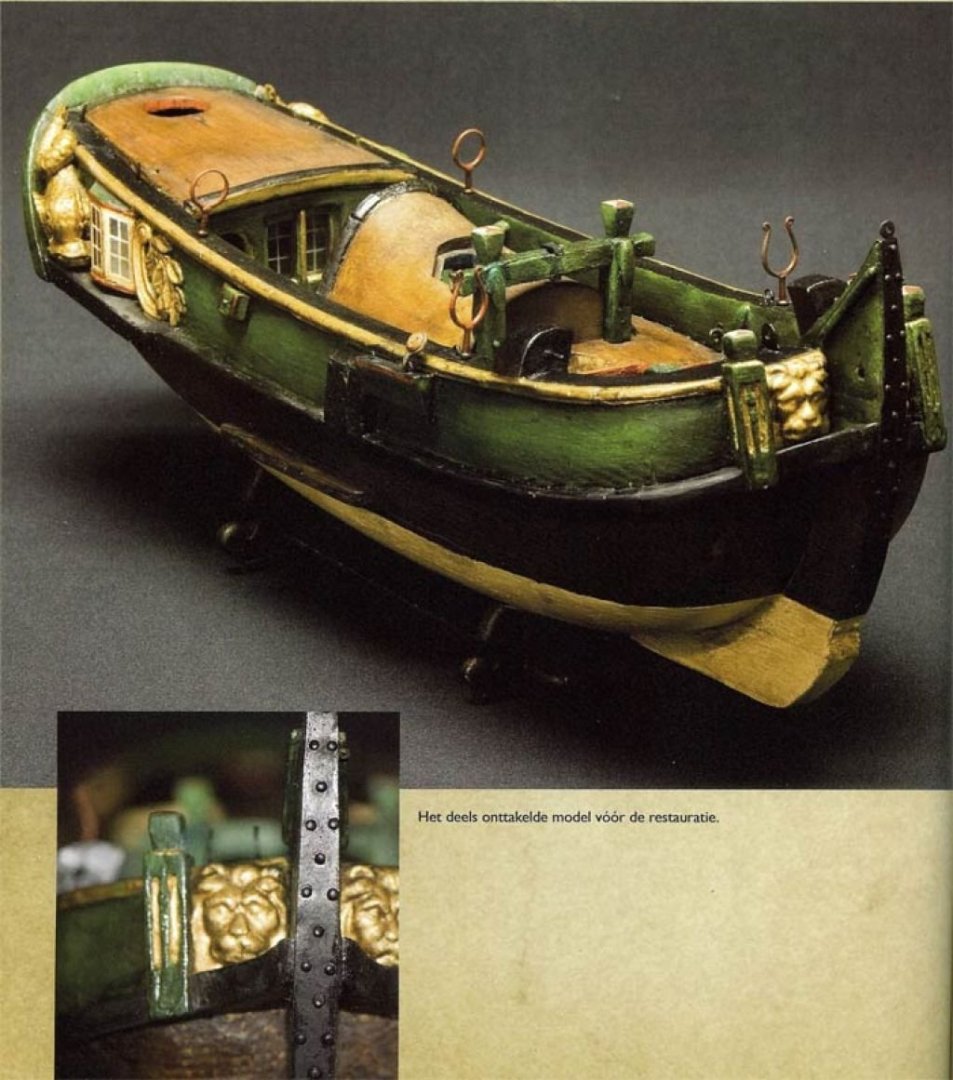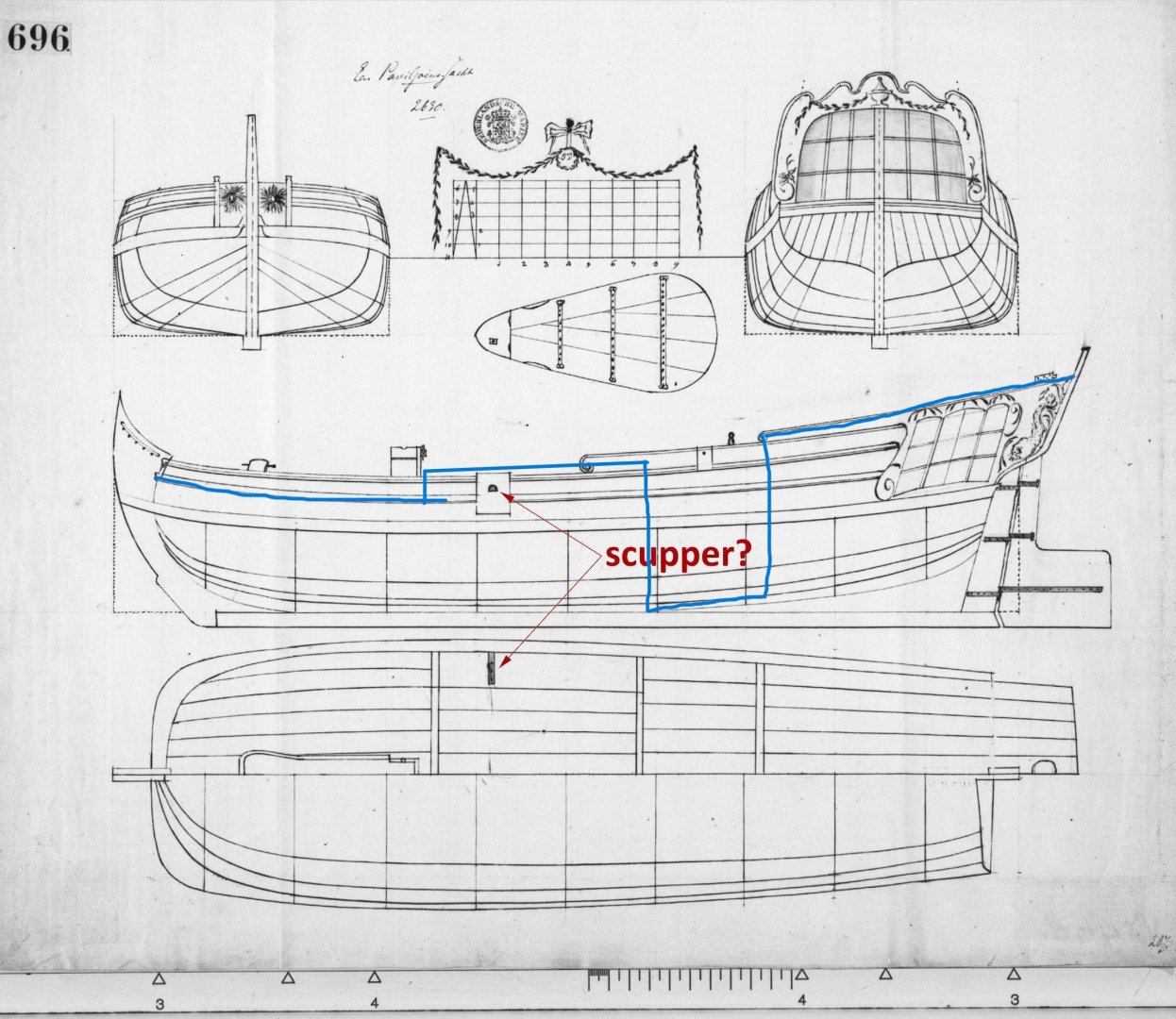-
Posts
3,513 -
Joined
-
Last visited
Content Type
Profiles
Forums
Gallery
Events
Everything posted by amateur
-

Paviljoensjacht 1733 | Blender
amateur replied to Robska's topic in CAD and 3D Modelling/Drafting Plans with Software
Which is consistent with the drawing we started with: the sternview shows the rudderpost from keel to the upper deck. I checked: all three models I posted have this setup/layout of the stern. Low res, but stull visible Jan -

Paviljoensjacht 1733 | Blender
amateur replied to Robska's topic in CAD and 3D Modelling/Drafting Plans with Software
And another. I’m inclined to believe that this two-cabin was for one readon or the other a common layout https://www.maritiemdigitaal.nl/index.cfm?event=search.getdetail&id=101005505 It is a pity thst these ics can’t be doenloaded at high resolution….😟 Jan -

Paviljoensjacht 1733 | Blender
amateur replied to Robska's topic in CAD and 3D Modelling/Drafting Plans with Software
https://www.maritiemdigitaal.nl/index.cfm?event=search.getdetail&id=100146019 model from the collection in Rotterdam, datimg around 1780. Two cabins, like many of the posh yachts from that period. I dont see how you arrive at a depth of 3 meters for the cockpit. It is smaller. You need that depth anyway, as the door of the aft cabin is at that level. The depth is the distance beteen the two dotted lined in Waldemars sketch. My guess: only half of your estimation. This one is also intresting. Drawing of around 1750 of a jacht: https://www.maritiemdigitaal.nl/index.cfm?event=search.getdetail&id=100196711 This one shows another possibility: deck level in aft cabin lower than in the cockpit. Also here: no open space forward, but a deck that is raised till ‘standing height’ below deck. Jan -

Paviljoensjacht 1733 | Blender
amateur replied to Robska's topic in CAD and 3D Modelling/Drafting Plans with Software
Yes, that would also be an interpretation. You can find drawings of both layouts: with and without a well, with/without forward cabin. That is why it is a pity that there are no deck-lines in the drawing. Jan -

Paviljoensjacht 1733 | Blender
amateur replied to Robska's topic in CAD and 3D Modelling/Drafting Plans with Software
In reply to @Lieste. In larger ships the deck is at the level of the wale, but in smaller yachts and inland vessels there is hardly any bulwark around the foredeck. Hence the level of my blue line. The point were the leaboards are attached is quite often a rather heavy doubling, so there need not be a relation to the decklevel (but it can be) As said before the drawing leaves some space for interpretation. and with respect to size, the overall length of the hull is somewere around 40ft, wich is around 11 meters. The Statenjacht Utrecht measures 24 meters lenght at the waterline, which is around 85ft. This yacht is a small vessel, comparable in size to the smaller wooden yachts that are still around and have almost no bulwark, except around the cockpit. (Boeierjacht Sperwer, Enkhuizen) Jan -

Paviljoensjacht 1733 | Blender
amateur replied to Robska's topic in CAD and 3D Modelling/Drafting Plans with Software
Need not be: deck planks are non-structual parts, the sode of the ship is. All ships I know of have some pretty sturdy frames at the location where the leenoards are attached. Only if there is a deckbeam at the ondicated location the connection is stronger. Althoug I very much doubt whether such a heavy connection is really necessary. Jan -

Paviljoensjacht 1733 | Blender
amateur replied to Robska's topic in CAD and 3D Modelling/Drafting Plans with Software
PIcture from around 1900, so the small sailingship in the middle is a bit newer than in your drawing, but it matches your drawing almost perfectly: flat deck up front, and above the aft cabin, helm on top of the roof of the cabin, to the cockpit in front of it, and a second cabin just aft the mast, with some space between the sides of the roof and the railing. -

Paviljoensjacht 1733 | Blender
amateur replied to Robska's topic in CAD and 3D Modelling/Drafting Plans with Software
It is definitely the connection point of the leeboard. What is uncelar is where the front of the cabin is: probably where waldemar indicates. That detremines the level of the deck in that section. The level of the front deck is also clear: more or less at the level of the small wale. The interesting part is the in between: There is a model of a 'Spiegeljacht' restored by Cor Emke, that shows a second cabin aft of the main-mast, with a roof-top aroudn the level of the railing, with a rather deep cockpit between the forward and the aft cabin. (Picture from Scheepshistorie, Vol11).. Taking that as point of reference, it might be as follows: Again, that leaeves room for interpretation: were is the helm, how deep is the cockpit between both cabins, and: does the roof of the forward cockpit run up to the sides, or is tehre some way of 'deck' around the cabin, as is the case in the model? Jan -

Paviljoensjacht 1733 | Blender
amateur replied to Robska's topic in CAD and 3D Modelling/Drafting Plans with Software
The scale measure is the normal way of giving the scale in these kind of drawings: the vertical lines are at feet distance. The triangle divides the feet into inches: reading from bottom to top, and from right to left: the horizontal distance between the vertical and the diagonal is 1 inch, at the second horizontal it is 2 inch. As there are 11 duimen in a voet, the top row is only half as high as the other rows, and gisves both 5 duim (right leg of the triangle), and 6 duim (left leg of the triangle). the first horizontal gives 10 duim (distance between vertical and diagonaal). Plank thickness did vary a bit, regarding size of the ship, demands of the owner, availability of the wood, and position of the wood in the hull (Bottom planks typically thicker than side-boards, outside planking thicker than inside etc. Hard to give exact measures without a building contract. I would say, somewhere between 1.5 and 2 duim, but I can be way off. And that is were it touches the question on inside or outside planking of the station-lines: adding 2 duim to the outside profile, does not fit nicely at all positions of your drawing. ON the other hand, leaving them out, doesn't fit either. Deck levels: I really don't know: your guess is at good as mine..... There are various configurations within these type of ships, so, without a longitudinal cross section ,or a builders contract, you can't really tell..... Jan -

Paviljoensjacht 1733 | Blender
amateur replied to Robska's topic in CAD and 3D Modelling/Drafting Plans with Software
Drawings exist ahowingboth outsideand inside. My guess is that here inside planks is used (the station-lines show whales and decorative parts without thickness. Also:station lines are shown at the top of the keel. N the other hand: no rabbet is shown. Problem is: these ‘condensed drawings’ are meant to give a reasonable impression of theshipto be build. Details - also including precise measurements - depend on the wood and quality of the builders. measurement I guess Amsterdamse voet, 28.4 cm, divided into 11 duim. regional variations did exist, but are relatively small, so I wouldn’t care too much. Relative dimensions tend to be more importsnt than absolute measurements. Jan -

Paviljoensjacht 1733 | Blender
amateur replied to Robska's topic in CAD and 3D Modelling/Drafting Plans with Software
This statenjacht is considetably larger than your paviljoenjacht. But the rig on all those jacht-types are more or less the same, although most pictures I know show the paviljoenjacht with a ‘tjalk’-like rig: large mainsail wth a boom often extrnding outboard, and a curved gaff, no square sails. More interesting the question: where are the deck-levels in the drawing? Jan -

Thresher & stable engine by RGL - FINISHED - Plus Model - 1/35
amateur replied to RGL's topic in Non-ship/categorised builds
nice machinery. You can almost hear the Buldog Dio would be nice, but you need quite a few people, and perhaps one additional piece of machinery: a baling press. At least in the Netherlands, once the diesel entered the scene, quite often the baling press was part of the show: quite a lot of pics in the internet show those setups: a tractor, a baling press, and a thresher. Parked somewhere at the border of a field, a flat horse drawn cart bringing in the grain, and lots of people moving, and feeding the machines. Looks very rustic, guess the farmers are glad that there is a machine doing the heave work nowadays. Jan -

Intro to Card Models Part VIII: Building V108 - Miscellaneous Bits
amateur replied to ccoyle's topic in Card and Paper Models
Nice model! Perhaps I should finish my v108 (still not made the masts) . Jan -
Lower dead-eyes were fitted (depending country/period), by chain, shackles, iron straps. distance between deadeyes: a measure often found is 2.5 times the diameter of the deadeyes between them. Don’t know whether that is based on any historical source, but it looks ‘pleasing to the eye’. and with respect to ratlines: as said: the thinner the better. Ratlines are by far the thinnest rope on a ship. Jan
-

Help identifying anything about this ship?
amateur replied to tula's topic in Nautical/Naval History
Yes, but on the spanish flag, the red stripes are only half of the width of the yellow band. Here it is painted in three equally wide bands…. Identufying the ship is completely impossible, unless it is a ship that has something to do with the main object of the painting (not uncommon in the Dutch paintings of merchants and commanders: all (or some of) their ships are present in the background) Jan -
Aber nur ganz wenig Luft nach oben I like the side by side. Perhaps you see possible improvements, I see a very good model that captures the originalboth in looks and feel. (and I will miss the progress updates…..) Jan
-
Sail sheet: attached to the lower block of the tackle. Left overvRope coiled on deck, or attached to the nearest side. As far as I know both for main and jib. Does your rigging also has the so-called ‘dirk’: a rope running from the mast top to the end of the boom? Jan
- 40 replies
-
- Speeljacht
- Card
-
(and 3 more)
Tagged with:
-
Van der Velde was not sketchy on details. So when he draws something, there was somehing. I know of things misding from his drawings, butnot of ‘making up’. A boathook or pole is the most likely. Often those are stoeed on the shrouds, but these ships dont have those. Given length and the fact that you should have them on hand, outboard stowage is logical. Jan
- 40 replies
-
- Speeljacht
- Card
-
(and 3 more)
Tagged with:
-
Depends on the scale: real world is clive hitch, and spliced eyes on the last shroud, At large scales this can be done, but at smaller scales a half hitch, or even no hith at all (ratline through the shrould using a needle) can be visually better. (Because clove hitches can be rather bulky as at smaller scales ratlines are almost always over scale) Jan
-
By using an iron bolt. It is still used in ships like the Dutch ‘botter’. Google the words ‘botter’ ‘zwaard’ (the dutch word for leeboard), and some pics shoul show up. a piece of wood attached to the outer bulwarks, to get it level with the wale. And a bolt through the head of the leeboard. Sometimes through the frames, sometimes a heavier reinforcement on the inside of the bulwark. And there is some tackle (or sometimes a single rope) to lower the leeboard into the water. Jan
- 40 replies
-
- Speeljacht
- Card
-
(and 3 more)
Tagged with:
-
Looking good from here! A small base is the safe option. Putting it sailing in a diorama is great, but you have to get the water, the waves and the sails exactly right, otherwise it spoils the effect. (And a sailing vessel need people on board…) Jan
- 40 replies
-
- Speeljacht
- Card
-
(and 3 more)
Tagged with:
About us
Modelshipworld - Advancing Ship Modeling through Research
SSL Secured
Your security is important for us so this Website is SSL-Secured
NRG Mailing Address
Nautical Research Guild
237 South Lincoln Street
Westmont IL, 60559-1917
Model Ship World ® and the MSW logo are Registered Trademarks, and belong to the Nautical Research Guild (United States Patent and Trademark Office: No. 6,929,264 & No. 6,929,274, registered Dec. 20, 2022)
Helpful Links
About the NRG
If you enjoy building ship models that are historically accurate as well as beautiful, then The Nautical Research Guild (NRG) is just right for you.
The Guild is a non-profit educational organization whose mission is to “Advance Ship Modeling Through Research”. We provide support to our members in their efforts to raise the quality of their model ships.
The Nautical Research Guild has published our world-renowned quarterly magazine, The Nautical Research Journal, since 1955. The pages of the Journal are full of articles by accomplished ship modelers who show you how they create those exquisite details on their models, and by maritime historians who show you the correct details to build. The Journal is available in both print and digital editions. Go to the NRG web site (www.thenrg.org) to download a complimentary digital copy of the Journal. The NRG also publishes plan sets, books and compilations of back issues of the Journal and the former Ships in Scale and Model Ship Builder magazines.









